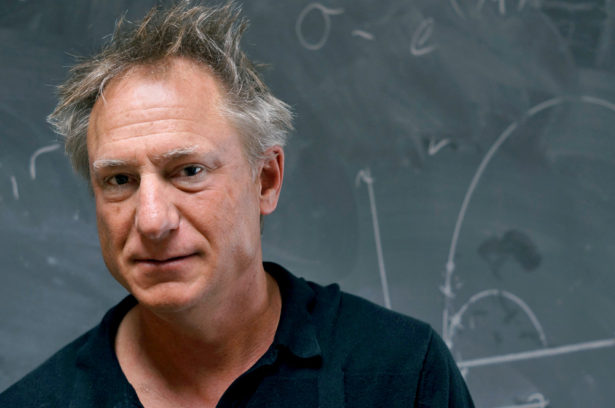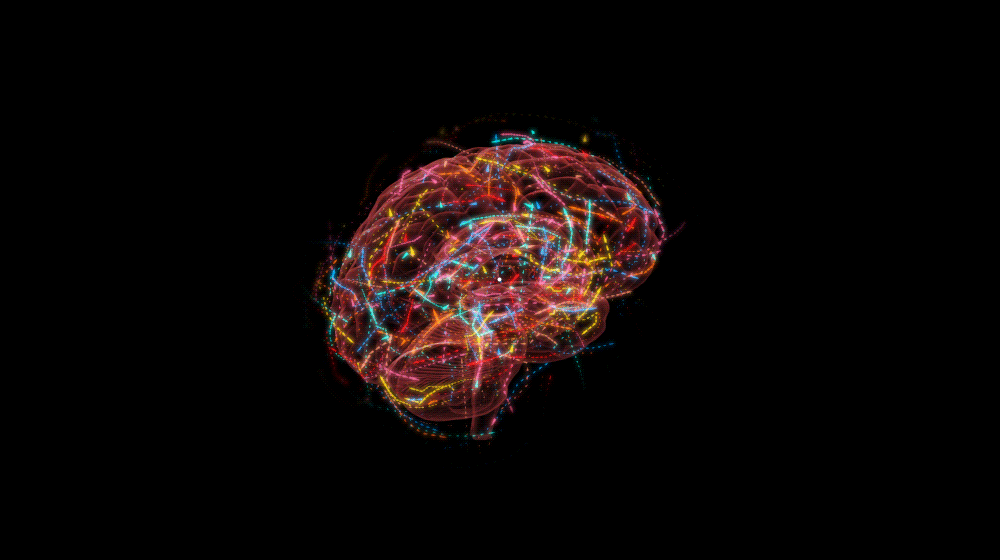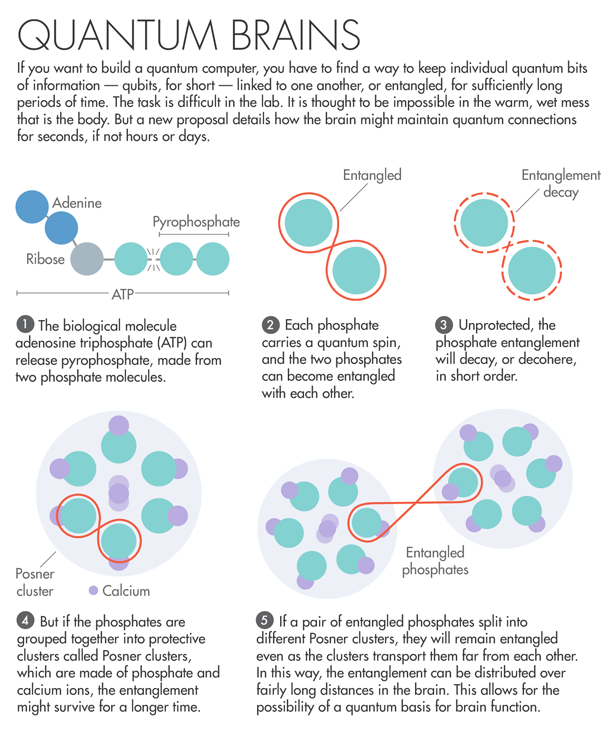A new twist on the quantum theory of the brain
The new theory explains how fragile quantum states can persist for hours and even days in our warm and wet brain. Experiments are already being prepared to test it.

Matthew Fisher, who proposed a theory about the effect of quantum effects on the brain
The mere mention of "quantum consciousness" causes discomfort for most physicists, since this phrase seems to remind them of some New Age guru. But if the new hypothesis is confirmed, it turns out that quantum effects do play a certain role in human consciousness. Matthew Fisher , a physicist at the University of California at Santa Barbara, surprised many last year by publishing the work with the Annals of Physics suggesting that the nuclear spins of phosphorus atoms can serve as rudimentary qubits of the brain - because of which computer.
10 years ago this hypothesis would have been rejected as nonsense. Physicists have already attacked such a rake, especially in 1989, when Roger Penrose suggested that mysterious protein structures, “ microtubules, ” play a role in the formation of consciousness, using quantum effects. Few people believed in the validity of such a hypothesis. Patricia Churchland, a neurophiloscope at the University of California, spoke on this topic, which can be just as well explained as "fairy fairy pollen in synapses."
Fisher's hypothesis has the same difficulties as microtubules: quantum decoherence. To build a working quantum computer, you need to combine qubits — quantum bits of information — to bring them into a tangled state. But intricate qubits are very fragile. They must be carefully protected from any noise in the environment. Only a photon colliding with a qubit will break the coherence of the entire system, destroy entanglement and destroy the quantum properties of the system. Quantum processing is difficult to maintain in carefully controlled laboratory conditions, not to mention the warm, moist and complex porridge of human biology, in which it is practically impossible to maintain coherence for quite a long time.
')
But over the past decade, there is increasing evidence that some biological systems can work with quantum mechanics. For example, in the process of photosynthesis, quantum effects help plants turn sunlight into fuel . Scientists also suggest that migratory birds have a “quantum compass” that allows them to use the earth’s magnetic field for navigation, and that the sense of smell is also rooted in quantum mechanics.
Fisher's idea of quantum data processing in the brain fits into the new scientific direction of quantum biology. Call it quantum neuroscience. He developed a complex hypothesis, including nuclear and quantum physics, organic chemistry, neurobiology, and biology. And although his ideas are faced with a high level of understandable skepticism, some researchers pay attention to them. “People who read his work (and I hope that there will be more of them) cannot fail to conclude that the old man is not so mad,” wrote John Preskill , a physicist at the California Institute of Technology after Fisher did report. “He may have felt for something. At the very least, he raises very interesting questions. ”
Senthil Todadri , a physicist at MIT, a long-time friend and colleague of Fisher, retains skepticism, but believes that Fisher changed the main question - does quantum computation occur in the brain - so that it is possible to test this hypothesis carefully. “It’s customary to assume that, of course, there is no question of quantum computing in the brain,” Todadri says. - He claims that there is exactly one loophole in this regard. So the next step is to test the possibility of covering this loophole. ” And in fact, Fisher is already recruiting a team to conduct laboratory tests that answer this question once and for all.

Looking back
Fisher belongs to the dynasty of physicists. His father, Michael I. Fisher, is a renowned physicist at the University of Maryland, whose work in statistical physics has earned numerous awards. His brother, Daniel Fisher , is an applied physicist at Stanford University, specializing in evolutionary dynamics. Matthew Fisher followed in their footsteps, building a very successful career as a physicist. In 2015, he received the prestigious Oliver I. Buckley Award for his research on quantum phase transitions.
So what made him move away from conventional physics towards the controversial and confusing porridge from biology, chemistry, neurobiology, and quantum physics? His struggle with clinical depression.
Fisher remembers well that day in February 1986, when he woke up feeling badly about his body, and with the feeling that he had not slept for a week. “It seemed to me that they pumped me up,” he said. Sleep did not help. A change in diet and exercise yielded nothing, and blood tests did not reveal any abnormalities. But this state of his persisted for two years. “It was like a headache all over the body, every moment of wakefulness,” he says. He even tried to commit suicide, but the birth of his first daughter gave meaning to his further struggle with the fog of depression.
In the end, he found a psychiatrist who prescribed a tricyclic antidepressant, and after three weeks his condition began to improve. “The metaphorical fog that surrounded me and shielded the sun began to thin, and I saw that there was light behind it,” says Fisher. After five months, he felt as if he was reborn, despite the serious side effects of the drug, including excessive blood pressure. Later, he switched to fluoxetine and since then constantly monitors and adjusts the medication regime.
His experience convinced him of the efficiency of drugs. But Fisher was surprised at how little neuroscientists know about the exact mechanisms of their work. This fueled his curiosity, and thanks to his experience in the field of quantum mechanics, he began to consider the possibility of quantum data processing in the brain. Five years ago, he began to study the issue in depth, based on his own experience of taking antidepressants.
Since practically all drugs used in psychiatry usually turn out to be complex molecules, he concentrated on one of the simplest, on lithium, a single atom — a spherical horse, so to speak, which is much easier to study than the same fluoxetine. By the way, this analogy, according to Fisher, is quite appropriate for this case, since the lithium atom is a sphere of electrons surrounding the nucleus. He concentrated on the fact that a prescription at a pharmacy can usually be used to buy the common isotope lithium-7. Will the use of the rarer isotope, lithium-6, lead to the same result? In theory, it should, because chemically these isotopes are identical. They differ only in the number of neutrons in the nucleus.
Rummaging in the literature, Fisher found that experiments comparing lithium-6 and lithium-7 had already been carried out. In 1986, scientists at Cornell University studied what effect these two isotopes have on rat behavior. Pregnant rats were divided into three groups — one was given lithium-7, one was lithium-6, and the third served as a control group. After the birth of offspring in rats receiving lithium-6, the maternal instinct, expressed in the care, care and construction of nests, was developed much stronger than the other two groups.
This struck Fisher. Chemically, the two isotopes should be identical, and even more so in the moisture-filled environment of the human body they should not show any differences. So what could have caused the differences in behavior observed by the researchers?
Fisher believes that the secret can lie in the back of the nucleus, in a quantum property that affects how long each atom can remain coherent - isolated from the environment. The smaller the spin, the less the nucleus interacts with the electric and magnetic fields, and the slower the coherence is lost.
Since lithium-7 and lithium-6 have a different number of neutrons, their backs also differ. As a result, lithium-7 loses coherence too quickly for quantum consciousness to work, and lithium-6 may remain entangled longer.
Fisher discovered two substances that are similar in everything except the quantum spin, and ours, that they have different effects on behavior. For him, it was a tantalizing hint that quantum data processing plays some kind of functional role in consciousness.

Quantum Protection Scheme
However, the task of moving from an interesting hypothesis to a real demonstration of the fact that quantum processes play a role in the work of the brain looks depressing. The brain needs a mechanism for the long-term storage of quantum information in qubits. It is necessary to confuse a multitude of qubits, and this entanglement must in some chemical way influence the way neurons work. There must also be a mechanism for transmitting quantum information stored in qubits throughout the brain.
This is a very difficult task. For five years of searching, Fisher identified only one suitable candidate for storing quantum information in the brain: phosphorus atoms, the only common biological element, other than hydrogen, with half spin small enough to increase the coherence time. Phosphorus cannot create stable qubits by itself, but its coherence time can be extended by linking it with calcium ions to form clusters.
In 1975, Aaron Posner, a scientist at Cornell University, discovered an incomprehensible clustering of calcium and phosphorus when studying X-rays of bones. He drew the structure of these clusters — nine calcium atoms and six phosphorus atoms, and later in his honor they were called "Posner molecules." These clusters reasserted themselves in the 2000s, when scientists, simulating the growth of bones in artificial fluid, noticed them floating in it. Subsequent experiments found evidence of their presence in the body. Fisher believes that Posner molecules can serve as a natural brain qubit.
This is a general picture, but the devil is in the little things that Fisher has been studying for the last few years. The process begins in a cell with a chemical called pyrophosphate. It consists of two bound phosphates, each of which consists of a phosphorus atom surrounded by several oxygen atoms with zero spin. The interaction between the phosphate spins entangles them. They can create pairs in four different ways: the three configurations give a total spin of 1 (weakly coupled triplet), and the fourth gives a zero spin, or “singlet”, the state of maximum entanglement, which is critical for quantum mechanics.
Next, the enzymes divide entangled phosphates into three free ions. They remain entangled even after separation. This process, according to Fisher, is faster for singlets. These ions, in turn, can be combined with calcium ions and oxygen atoms and turn into Posner molecules. Calcium and oxygen do not have a spin of the nucleus, therefore the total half-integer spin, which is critical for long-term coherence, is preserved. These clusters protect entangled pairs from external influences so that they can maintain coherence as long as possible. Fisher estimates that it could be hours, days, or even weeks.
Thus, entanglement can spread over fairly large distances inside the brain, affecting the output of neurotransmitters and the operation of synapses between neurons - a frightening long-range action in the version of the brain at work.
Theory check
Researchers in quantum biology are intrigued by Fisher's assumption. Alexandra Olaya-Castro , a physicist at University College London who worked on quantum photosynthesis, calls this “a well-thought out hypothesis. It does not provide answers, but only opens up questions that may lead us to test individual steps of the hypothesis. ”
Oxford University chemist Peter Hore agrees with her, investigating quantum effects as applied to the navigation of migratory birds. “A theoretical physicist offers us certain molecules, mechanisms, and all the technology of how they can affect the work of the brain,” he says. “This opens up opportunities for experimental testing.”
Fisher is now just trying to conduct experimental checks. He spent a sabbatical at Stanford, working with researchers to reproduce a 1986 study with pregnant rats. He acknowledged that the preliminary results were disappointing, the data did not provide enough information. But he believes that if it is better to reproduce the 1986 experiment, the results can be more convincing.
Fisher applied for a grant to conduct deeper experiments in quantum chemistry. He gathered a small group of scientists of various specialties at his university and attracted scientists from the University of California at San Francisco. First, he wants to figure out whether calcium phosphate forms stable Posner molecules, and whether the nuclear spins of phosphorus from these molecules can get entangled for long periods of time.
Even Horw and Olia-Castro are skeptical about this, especially Fisher’s assessments regarding the timing of a day or more. “To be honest, I think this is highly unlikely,” says Olia-Castro. “The longest time intervals related to biochemistry and occurring in the brain are no more than a second.” (Neuron information is stored for microseconds). Houre calls this possibility "remote", speaking a maximum of seconds. “This does not reject the whole idea, but it seems to me that other molecules will be required for long-term entanglement,” he says. “I don't think these are Posner molecules.” But I wonder how the idea will evolve. ”
Some people think that no quantum processes are needed for the brain to work. “There is evidence that all the interesting things connected with consciousness can be explained by the interaction of neurons,” shared New Scientist Paul Thagard, a neuro-philosopher at the University of Waterloo in Ontario.
Many other aspects of the Fisher hypothesis also need to be properly verified. He hopes that he will be able to carry out the necessary experiments for this. Is the structure of Posner molecule symmetrical? How are nuclear spins isolated?
What is more important - what if these experiments prove that the hypothesis is wrong? Then, you may have to completely abandon the idea of quantum consciousness. “I believe that if the nuclear spin of phosphorus is not used in quantum data processing, then quantum mechanics does not play a role in the work of consciousness for long periods,” says Fisher. - From a scientific point of view, it is very important to exclude. It will be useful for science to know this. ”
Source: https://habr.com/ru/post/372875/
All Articles